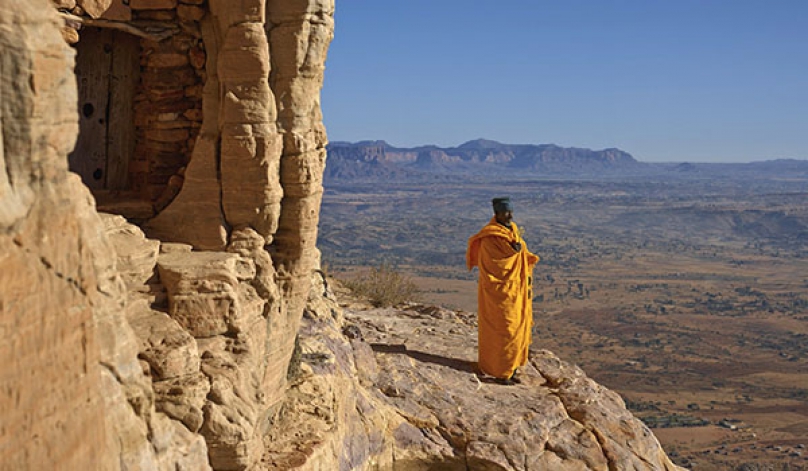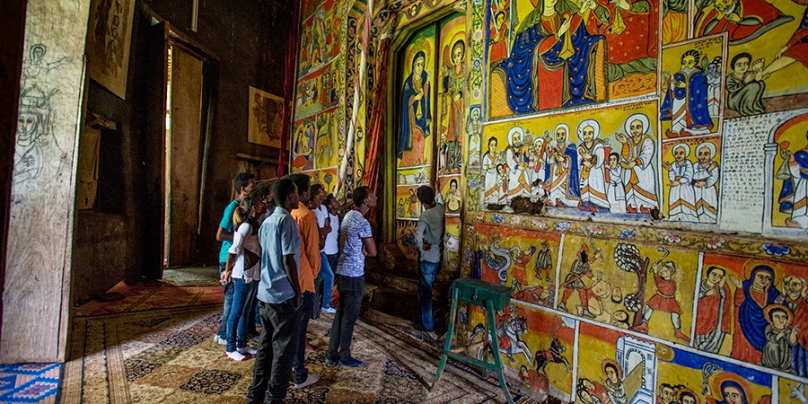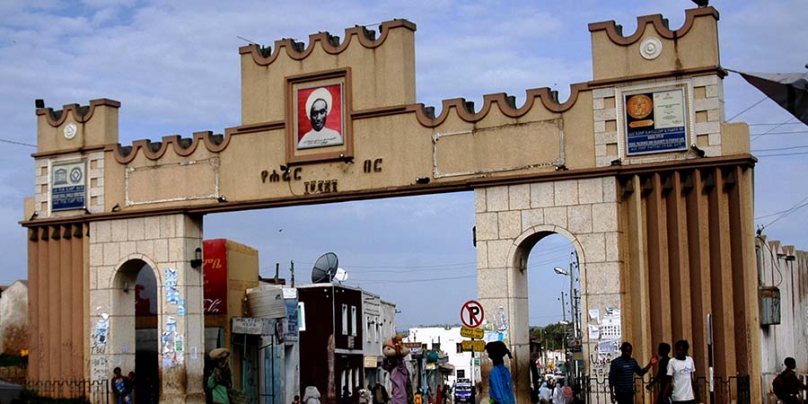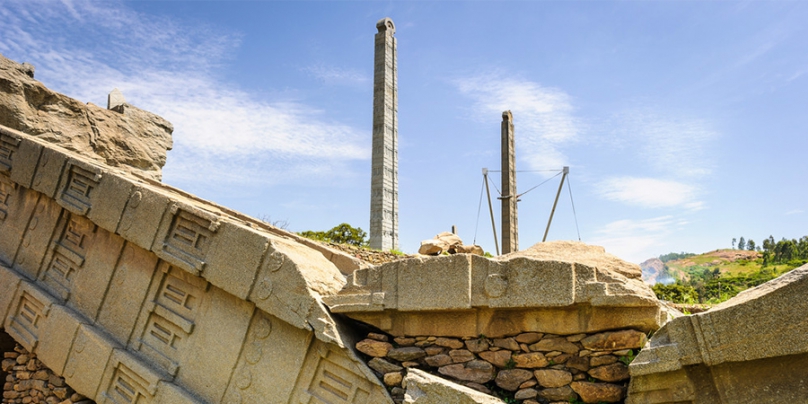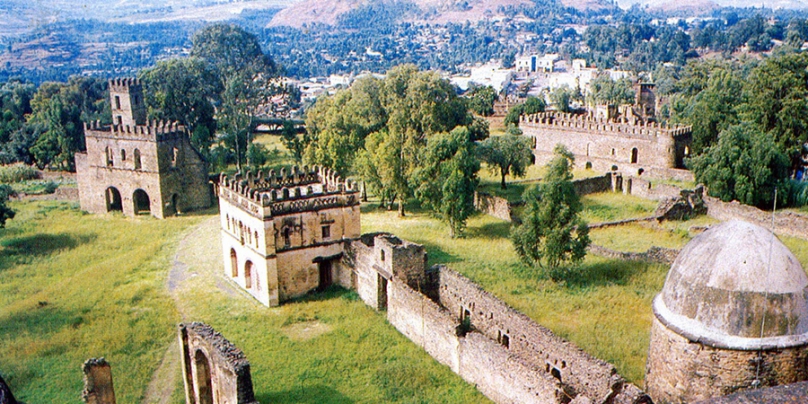Yeha (Ethiopia's First Capital)
Yeha is situated in the northern mountainous section of the Tigray region. Although today this small settlement survives as a shanty town, it was once a site of great pre-Axumite civilization. Believed to be Ethiopia's first capital, Yeha was first uncovered in a complex archeological excavation around a courtyard at the beginning of the 20th C. The first settlers of this area, the Sabeans, were the founders of the Axumite kingdom.
The temple of Yeha, with one side of its walls in ruin, is otherwise still intact and testifies to the advanced level of the people of those times. There is no trace of mortar being used to build the temple of which the inside of the walls was believed to be have been paved with gold.
The archeological excavations made in 1909, 1947 and 1973 respectively, reveal that this beautiful temple was destroyed by fire. Treasures such as gold rings, golden lions, stone-engraved inscriptions written in Sabean, stone-carved animals like the Walya ibex (one of Ethiopia's endemic mammals), pottery works and others were uncovered. Some of these findings are displayed in the 4th-century church museum found in the same compound as the temple while others are displayed at the National Museum in Addis Ababa. The twelve underground formations and four other very deep cave structures (which seem to lead to Yemen, Lalibela, Jerusalem and Axum), increase the area's importance in terms of both archeological research and tourism.
Lake Tana Monastery
BAHIR DAR is a pleasant city situated at the eastern shore of LAKE TANA, the largest lake in Ethiopia. The ancient island monasteries on the lake are known for their very old treasures and parchment. They have been the site of pre-Christian shrine. The BLUE NILE FALLS is one of the most spectacular falls in Africa. The thunderous noise and the rainbow formations combined with the luscious vegetation teems and variety of bird lives make it the most impassive falls amongst the whole Nile Rive.
Harar
A city carved from legend-a medieval settlement in the north. The 11 rock-hewn monolithic churches, believed to have been built by king Lalibella in the late 12th century. These notable structures are carved inside and our-side of the solid rock, and are considered among the wonders of the world. Each building is architecturally unique, and several of them fascinating rock paintings which is registered by UNESCO as a world heritage.
Axum
According to the kibre- negest (Book of Kings) written in 14th century , it was the capital of the legendary queen of Sheba in the 10th century BC, it does seem certain that a high civilization was established here in Axum. Axum is renowned for its cathedral of St. Mary of Zion, where legend has it, the original Arc of covenant is housed. Axum is also famous for its 7 mysterious monolithic stelae, hewn from single pieces of solid granite. This site is registered by UNNESCO as world heritage.
Gondar
Gondar, which Emperor Fasiledes founded as his capital in 1636, is the site of numerous castle-like palaces, dating from the 17th and 18th centuries. The city was Ethiopia’s capitals until the reign of the would-be reforming Emperor Tewodros II, also known as Theodora. The Portuguese influenced Gonderian castles built from 16th century up to 17th century are registered by UNESCO as a world heritage.
